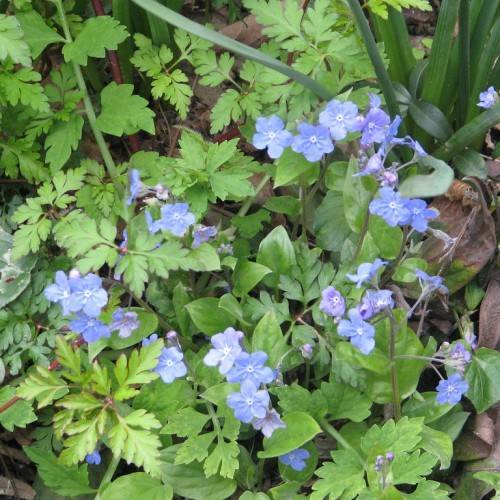
navelwort
Omphalodes cappadocica
Also Known As - blue-eyed MaryCycle:
Herbaceous Perennial
Watering:
Average
Hardiness Zone:
6 - 9
Flowers:
Flowers In Spring
Sun:
Filtered shade
Fruits:
Fruits Ready In Fall
Leaf:
Yes
Growth Rate:
Low
Maintenance:
Moderate
Salt Tolerant:
Yes
Care Level:
Medium
watering
Navelwort should be watered moderately and about once every 7-10 days. It prefers moist, well-draining soil, so water deeply to ensure that the plant is getting plenty of moisture deep down in the roots. Navelwort also does best in consistently damp soil, so water more frequently during hot, dry weeks. During the winter, reduce watering significantly. Navelwort does not tolerate soggy soil, so ensure that the soil is draining well to avoid root rot or fungal problems.
sunlight
Navelwort, also known as Omphalodes cappadocica, is a shade-loving plant species native to most of Europe, parts of Asia, and North Africa. It is traditionally grown in partially shaded areas, such as woodland gardens, and can thrive in USDA Plant Hardiness Zones 3-8. When it comes to sunlight, navelwort prefers filtered sunlight or dappled shade throughout the day. It can tolerate periods of full sun, but its foliage may become scorched if exposed for too long. Morning sun is best, and if planting in an area of full sun, some kind of shade covering or protection should be provided in the afternoon. Overall, navelwort should be given around 4 to 6 hours of sunlight per day, depending on the intensity of sunlight in its growing environment. In hotter and more humid climates, more shade will be needed, and vice versa in cooler climates.
pruning
Navalwort should be pruned once a year, in late winter or early spring when there is no risk of frost. This will help to keep the plant healthy and encourage new growth and flowering. Prune by removing dead or damaged stems and also by cutting back any straggly stems to control size. Make sure your pruning cuts are clean and sharp and cut back stems to just above a leaf node. This will encourage new growth from that node. Avoid pruning more than a third of the plant. After pruning, mulch around the plant with compost or well-rotted manure to help retain soil moisture.
